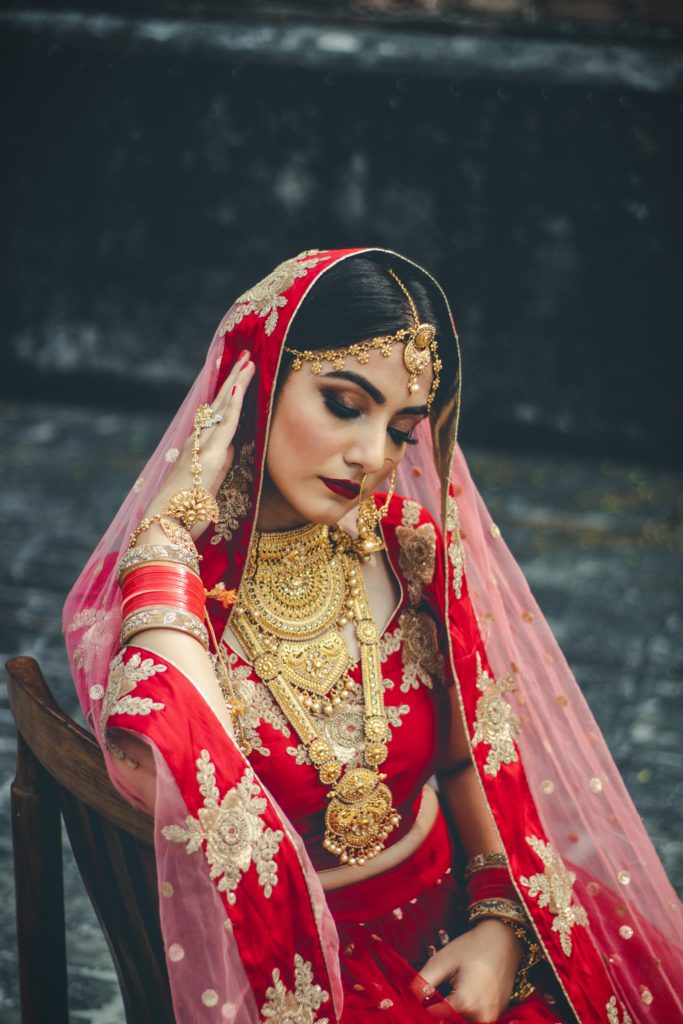The Indian subcontinent is home to some of the best and most diverse jewellery that has a long history. The heavy embellishments and various designs have enchanted people all over the world.

With passing time the use and making of jewellery has been influenced by various cultural, political, and social factors. As Indian jewellery gained recognition globally, there came a trend of fusion, where Indian and Western ideas were combined to produce some captivating designs.
Ancient Indian Jewellery
The journey of Indian jewellery has been an interesting one. It dates back to the time of the Indus Valley Civilization, which is one of the oldest in the world. These ancient Indian jewellery were simple. Most were made of stones, strings and beads.
The epics Mahabharata and Ramayana have numerous mention of jewellery being used. The jewellery from these epics is at least 5000-year-old traditions. There is mention of the golden casket which holds the ornaments and kaustubha gem of Lord Vishnu. Crest jewel Cudamani was worn by Sita, which is an important part of the epic. The Mahabharata describes how jewels came out of the ocean.
Mughal Jewellery
With the advent of Mughals on the Indian subcontinent, came the innovations in the design and jewellery in the 16th century. The Mughals brought a lot of knowledge with them regarding jewellery engineering. They made use of gems and metals prevalent in the country. Soon, gems and precious metals became a symbol of social status and only few could possess them.
Diamonds
Diamonds were first mined in India near the banks of Godavari river in Hyderabad. India was also the leading exporter of gems worldwide. Diamonds were used for various purposes. There are many stories of a diamond being used for blessings as well as curses. The royal conspiracies highlighted the use of diamond dust for poisoning people.
Modern Indian Jewellery
Under colonial rule, the jewellery designs had influences of the West. During the 19th and 20th centuries, there was a lot of intermingling of styles from different parts of the world. These designs have evolved with time to give us the modern designs that we use nowadays.

Gold and Silver Jewellery
The jewellery made of gold and silver metals are considered sacred in Indian society. Gold symbolises the Hindu Goddess of wealth, Lakhsmi. Purchasing gold or silver on the occasions of Dhanteras and Akshaya Tritiya is considered lucky. Gold is also seen as a symbol of immortality in the Vedic Hindu tradition.
Navratnas
The nine jewels or navratnas were a collection of nine gems which symbolised nine Hindu deities. It was worn by the emperors and was a sign of power.
Jewellery for Protection
Mangalsutra is a piece of jewellery worn by Hindu married women as a sign of their marriage. It is meant to protect women. ‘Mangal’ means holy and ‘sutra’ is a thread.
Another one in this category is the precious jewellery charm. Popular by the name of ‘nazar kada’, these are bracelets meant to ward off the evil spirits and bad luck. Usually made of silver with the embedding of gems. It was worn by adults and tied around the wrists of babies to protect from bad luck or anything evil.
Other Indian Jewellery
Indian jewellers are known for making exquisite pieces of jewellery. Kundan, Meenakari, Navratna and Lacquer are some beautiful works of jewellery. Precious jewellery necklace is a must-have in Indian weddings. Other items include finger rings, bracelets, bangles, anklets or payal, toe rings, waistband, maang tika, etc.
Present Day Jewellery
Indian jewellery has charmed celebrities abroad also. Many famous artists of the west are seen wearing the Indian style jewellery in the concerts and award shows. Drawing legacy from the Mughals and other ancient emperors, Indian jewellery is now a favourite among the fashion lovers.

Very informative article, Thanks for the share.